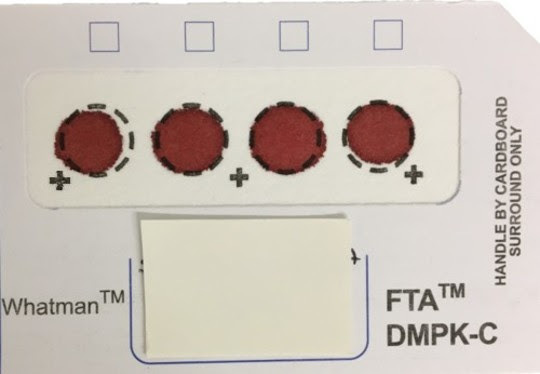In collaboration with Anti-Doping Denmark and the Norwegian Doping Control Laboratory, University of Copenhagen researchers have developed a method that, using blood droplets, can easily and effectively detect athletes who have taken performance-enhancing drugs. The method has been approved by the World Anti-Doping Agency (WADA) and could be tested at the Tokyo Olympics.
We probably only know the tip of the iceberg when it comes to the number of doped athletes. Indeed, studies show that considerably more athletes use performance-enhancing drugs than get caught in anti-doping controls.
Among other things, this may be due to lackluster doping measures in certain countries or that some practitioners engage in sophisticated methods, such as micro-dosing, which can be difficult to detect.
In 2017, a number of UCPH researchers and others had a good idea for making it easier and more effective to find drug cheats using a small prick in the finger and just a few droplets of blood.
"The method involves a prick of an athlete's finger or upper arm using a needle and a quick collection of a few droplets of blood on a piece of filter paper. The dried blood droplets are then analysed for doping substances in a laboratory. The method is smart because it is faster, less painful and less intimidating than traditional blood and urine tests," explains Sara Amalie Solheim, currently a scientific consultant at Anti-Doping Denmark.
Solheim is among the researchers behind the idea for the testing method, which she helped develop as a PhD student at the University of Copenhagen from 2017 to 2019 in collaboration with, among others, UCPH researcher Nikolai Nordsborg, the Norwegian Doping Control Laboratory and Anti-Doping Denmark, where she currently works as a scientific consultant.
More precise, more practical
In a new study from 2021, published in the journal Drug Testing and Analysis, Solheim and Nordsborg demonstrate that the method is, among other things, very accurate when it comes to detecting anabolic steroids, including testosterone, which are often used in disciplines such as weightlifting and strength lifting.
Furthermore, an evaluation of the method concludes that athletes, doping control officers and laboratory staff prefer the blood drop method to conventional testing methods.
"Athletes find the method to be more gentle and effective because it doesn't hurt to get pricked in the finger or upper arm and it's over quickly," says Sara Amalie Solheim.
"The method also addresses the problem that doping control officers' face in getting a dehydrated athlete to provide a urine sample, after, for example, sitting on a bicycle for several hours," adds Nikolai Nordsborg, a professor at the Department of Nutrition, Exercise and Sports at the University of Copenhagen, who contributed to the development of the method as well.
Likely to be tested at this year's Olympics
The method makes it possible to test far more athletes in a short period of time. Instead of ten athletes a day, 100 can now be tested because the test is performed so quickly and is easily transported.
"The paper with the dried droplets of blood can be stored in an envelope in the back of a car and doesn't require the cooling or space that today's blood tests do," says Nikolai Nordsborg.
Researchers aren't the only ones excited about the method. The World Anti-Doping Agency (WADA) sees great potential in the dried droplets of blood and has just approved the method for implementation in Denmark and internationally from September 2021. They even plan to test it out at this summer's Tokyo Olympics.
"The plan is for a small amount of blood from traditional blood samples to be transferred to filter paper, where it will then be dried and analyzed for doping substances. WADA has decided to test the method because it is expected to be better at detecting certain illegal substances than either urine and conventional blood tests. That's partly because these substances are quickly broken down in blood samples, a process that slows down in dried blood and allows more substances to be detected," concludes Sara Amalie Solheim.
FACTS
Known as the DBS method
- The method of using dried droplets of blood as a doping test, now approved by WADA, is known as the Dried Blood Spot (DBS) method.
- The DBS method was developed by a range of international researchers alongside experts from the University of Copenhagen, the Norwegian Doping Control Laboratory and Anti-Doping Denmark.
